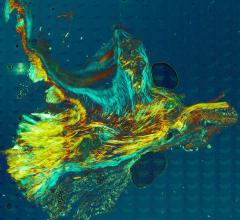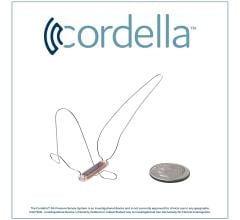
Selective activation of the beta2-adrenergic receptor (beta2AR) by a beta-arrestin-biased pepducin promotes activation of a beta-arrestin signaling pathway that is cardioprotective. Image courtesy of the lab of Jeffrey Benovic, Thomas Jefferson University.
June 30, 2016 — Researchers at Thomas Jefferson University have discovered how to enhance the effectiveness of beta-blockers for heart failure patients by tapping an alternate pathway that both blocks damage to the heart and helps it keep pumping. The research, published online in the Proceedings of the National Academy of Sciences (PNAS), offers the possibility of developing a new and potentially more effective class of heart-failure medications.
About 5.7 million Americans have heart failure, half of whom will die from the disease within five years, according to the Centers for Disease Control and Prevention (CDC). Two processes help drive the disease: a weakened heart muscle that is less able to pump, and the death of heart cells that irreparably damage the heart. Beta-blockers, commonly used to treat heart disease, work by blocking the beta-adrenergic receptors in the heart, saving heart cells from cell death. But beta-adrenergic receptors also help keep the heart pumping, a function that this medication also blocks.
“There’s much more work to be done before this is ready for patients, but this is an excellent example of how a little curiosity in the basic research laboratory can lead to discoveries that have the potential to change the way we treat a very common and very deadly illness,” said senior author Jeffrey Benovic, Ph.D., Thomas Eakins Professor and chair of the Department of Biochemistry and Molecular Biology at the Sidney Kimmel Medical College and associate director at the Sidney Kimmel Cancer Center at Thomas Jefferson University.
Of the beta-adrenergic receptors present in the heart, it is the beta1-adrenergic receptors that are primarily responsible for the heart’s contraction, or pumping action, and that are targeted by traditional beta-blockers. Benovic’s lab, however, had developed a series of molecules called pepducins that were derived from pieces of the beta2-adrenergic receptor, and which, they discovered, could selectively activate the very receptor they came from.
It was while former graduate student Richard Carr, in Benovic’s lab, was characterizing the properties of these pepducins that he noticed that the molecule shared similar characteristics to a common heart-failure medication called carvedilol. They sent the pepducin to their colleague Douglas Tilley, Ph.D., at Temple University who tested how heart cells responded to the molecule. “He was blown away by what he saw,” said Benovic.
When Tilley pulsed the heart cells with the pepducin, the cells started to beat more forcefully. “We didn’t expect that this would happen,” said Benovic. The pepducin they were using was specific for the beta2-adrenergic receptor pathway, and didn’t have any effect on the beta1 receptors. The researchers had demonstrated for the first time that contraction of heart muscle cells could be triggered via the beta2-adrenergic receptor, using this novel pepducin.
Through further biochemical analysis the researchers showed that the pepducin activated the ability of the beta2-adrenergic receptor to interact with a secondary signaling molecule called beta-arrestin, and that it was this interaction that promoted the heart cells to beat. In addition, the pepducin only activated the beta2 receptor to 40 or 50 percent. By tinkering with the pepducin molecules, said Benovic, “we think we can get full activation.”
The next steps, said Benovic, are to design a better version of the pepducin. In addition, Benovic and colleagues plan to screen existing small molecules, or drugs, to see if one can mimic the action of the pepducin. They also plan to study the structure of the pepducin and the beta2 receptors to gain better insight into the design of more effective pepducin-like molecules.
“If we find or design a compound that works like this pepducin, it wouldn’t necessarily cure heart disease, but it would give doctors another tool to help bolster a failing heart,” said Benovic.
This research was supported by National Institutes of Health awards R37 GM047417, R01 GM068857, P01 HL114471, R01 HL105414, RO1 HL074854, P01 HL075443, P01 HL091799 and T32 GM100836. The authors report no conflicts of interest.
For more information: www.pnas.org


 October 02, 2024
October 02, 2024 








